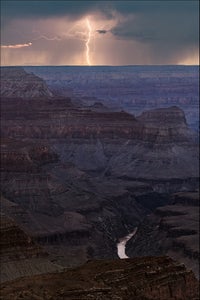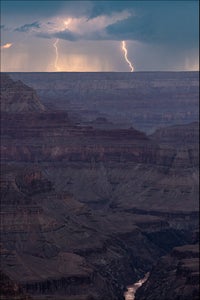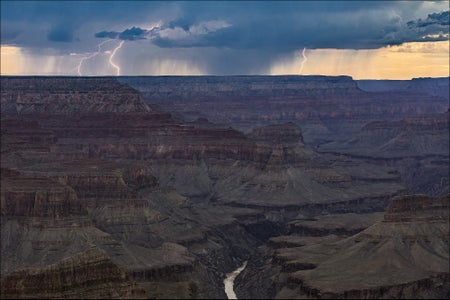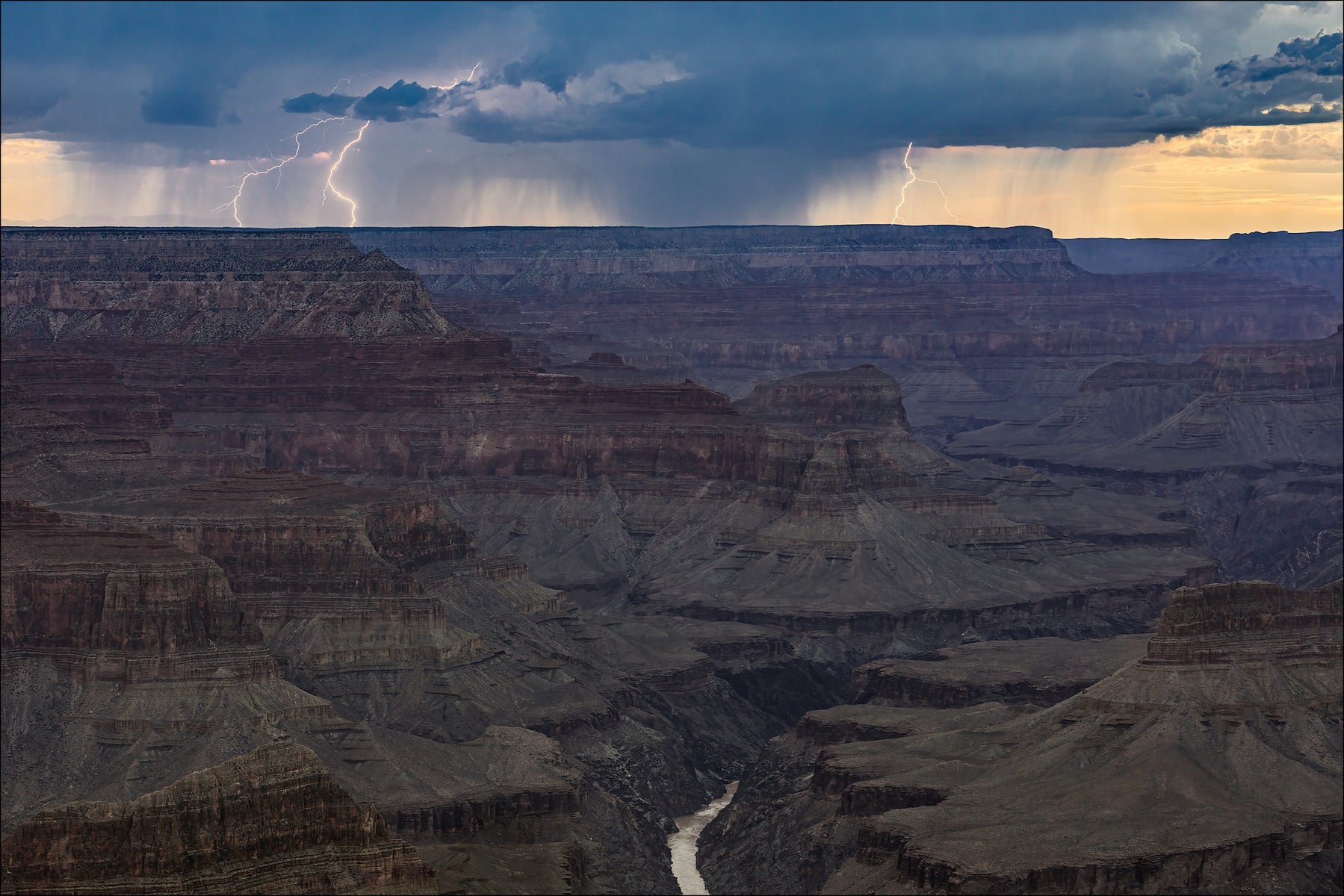California born and raised, lightning had been more of an abstract concept for most of my life—something to read about, and see (poorly rendered) in movies, but rarely viewed in person. And photographing lightning? Out of the question.
That changed a little more than 10 years ago, when fellow Sony Artisan Don Smith and I drove to the Grand Canyon armed with our brand new lightning sensors and absolutely no clue how to photograph lightning. We returned from that trip with enough success to be completely hooked on lightning photography, and enough knowledge to plan a Grand Canyon photo workshop focused on the summer monsoon and especially (fingers crossed), lightning.
Fresh from a photo trip to the Grand Canyon, landscape pro Gary Hart shares his secrets for capturing the elusive strikes during the day, and doing it safely.
These workshops soon became personal favorites, but after several years, Don cut back his schedule and dropped most of his domestic workshops (we still partner for New Zealand and Iceland workshops). I, on the other hand, just couldn’t give up the Grand Canyon monsoon and kept coming back. This year I did two, the second of which was probably my most memorable lightning workshop so far – if not for the quantity of the lightning (excellent, but not record-breaking), certainly for the quality.
The trip’s lightning highlight came near the end of the second workshop, during our sunset shoot at Hopi Point on the South Rim. The prior evening we’d enjoyed a spectacular lightning show at Cape Royal that I labeled at the time one of the top five lightning shoots I’ve ever experienced, so hoping for more felt kind of greedy. Little did I know…
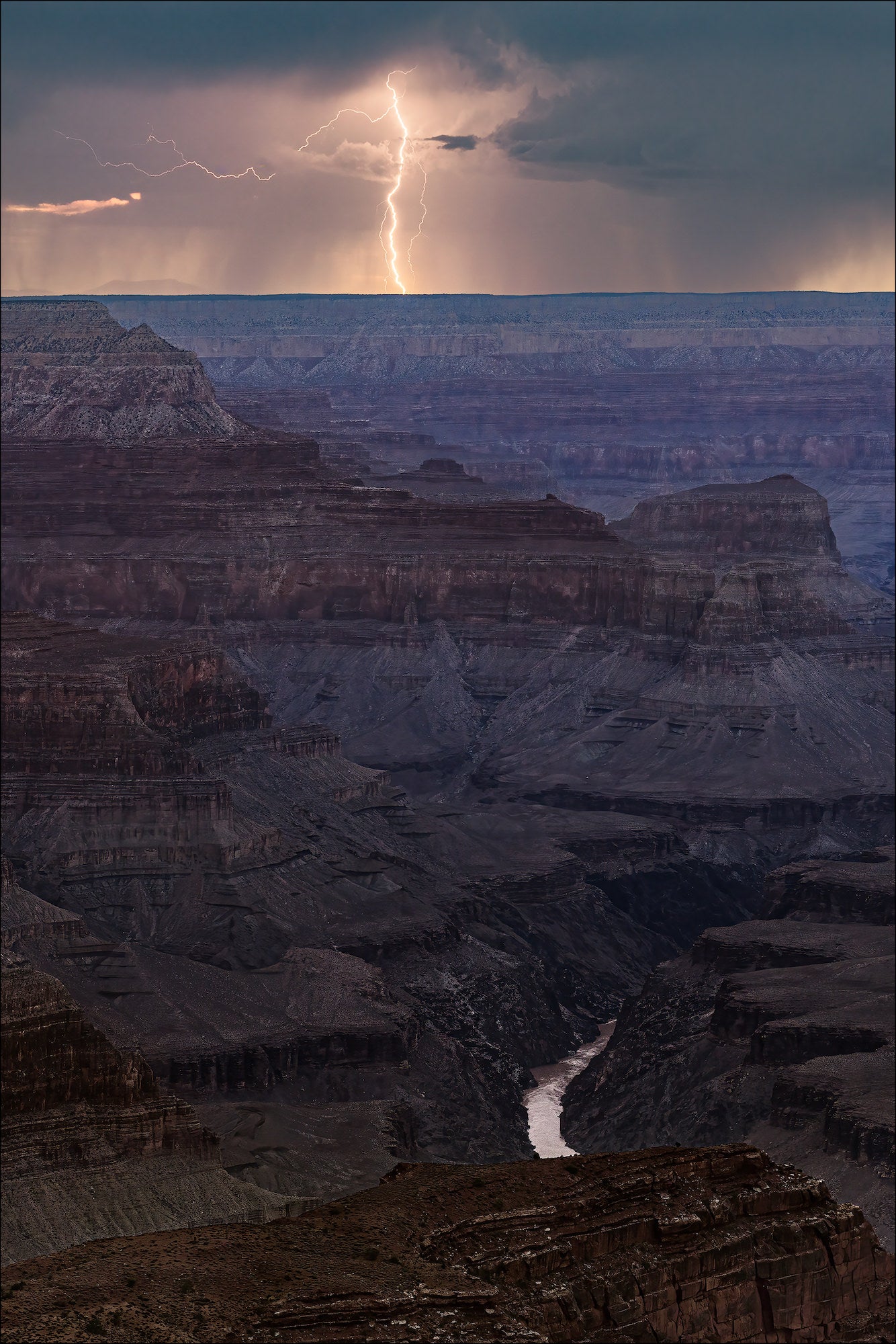
Photo by Gary Hart. Sony Alpha 7R IV. Sony 24-105mm f/4 G. 2/5-sec., f/11, ISO 320
The Secret To Successful Daylight Lightning Photography
While night lightning success is mostly a matter of long exposures with any camera on a tripod, the secret to successful daylight lightning photography is more complicated. It starts with the right equipment:
- Camera with high resolution and minimal shutter lag (time between the instruction to fire the shutter and the actual shutter firing): Because you never know exactly where the next bolt will strike, it’s often best to compose a little loose and crop later—the higher your camera’s resolution, the more cropping freedom you have. And sometimes the lightning comes and goes so fast, only the fastest cameras can catch it. Sony is the clear winner on both accounts, with unmatched resolution and shutter lag. I use the Sony Alpha 7R IV.
- Reliable Lightning Sensor (not the cheapest, slickest looking, or most feature-packed): There are many lightning sensors to choose from, some much better than others, so read reviews and ask around.
- Sturdy Tripod: There’s far too much waiting and watching in lightning photography to attempt it hand-held.
- Mid-Range Zoom Lens: My Sony 24-105mm f/4 G lens provides the perfect focal range, and is just about the only lens I use when photographing lightning. A longer telephoto can work for distant lightning, but lightning that requires an extreme telephoto risks being out of the lightning sensor’s range. And if I start reaching for a 16-35mm or 12-24mm lens, the lightning is almost certainly too close and it’s probably time to race for cover.
- Neutral Density Filter Or Polarizer: Unlike night lightning, photographing daylight lightning requires a very specific range of shutter speeds—too long, and the lightning washes out or disappears; too fast, and you risk missing additional strokes that may be part of a single lightning strike. Without a neutral density filter or polarizer to reduce light, it’s often difficult to hit the exposure sweet spot when the sun is out.
On a typical morning or afternoon lighting shoot, with the sun high and a mix of clouds and blue sky, the daylight lightning shutter speed range I go for is 1/4 to 1/20-second—leaning toward a faster speed when the scene is brighter, and slower when it’s darker (lots of black clouds or approaching twilight).
Staying Safe While Getting The Shot
Lightning safety is of course the top priority. The safest place to be when lightning is nearby is inside, but the Grand Canyon offers the next best thing for photographers: a combination of spectacular scenery and expansive vistas that allow you photograph electrical storms from a relatively safe distance, with parking a very short walk (or run) away. Most of the lightning my Grand Canyon groups photograph is far enough away that we can’t hear the thunder.
The evening of our South Rim lightning show, I’d taken my workshop group on the Hermit’s Rest shuttle to the South Rim’s west-most vistas. After enjoying the route’s variety of spectacular views, along the way targeting a couple thunderstorm false alarms (promising cells that never delivered lightning), we ended up at Hopi Point for sunset. Though there was no sign of lightning activity when we arrived, nice clouds gave us hope for a colorful sunset.
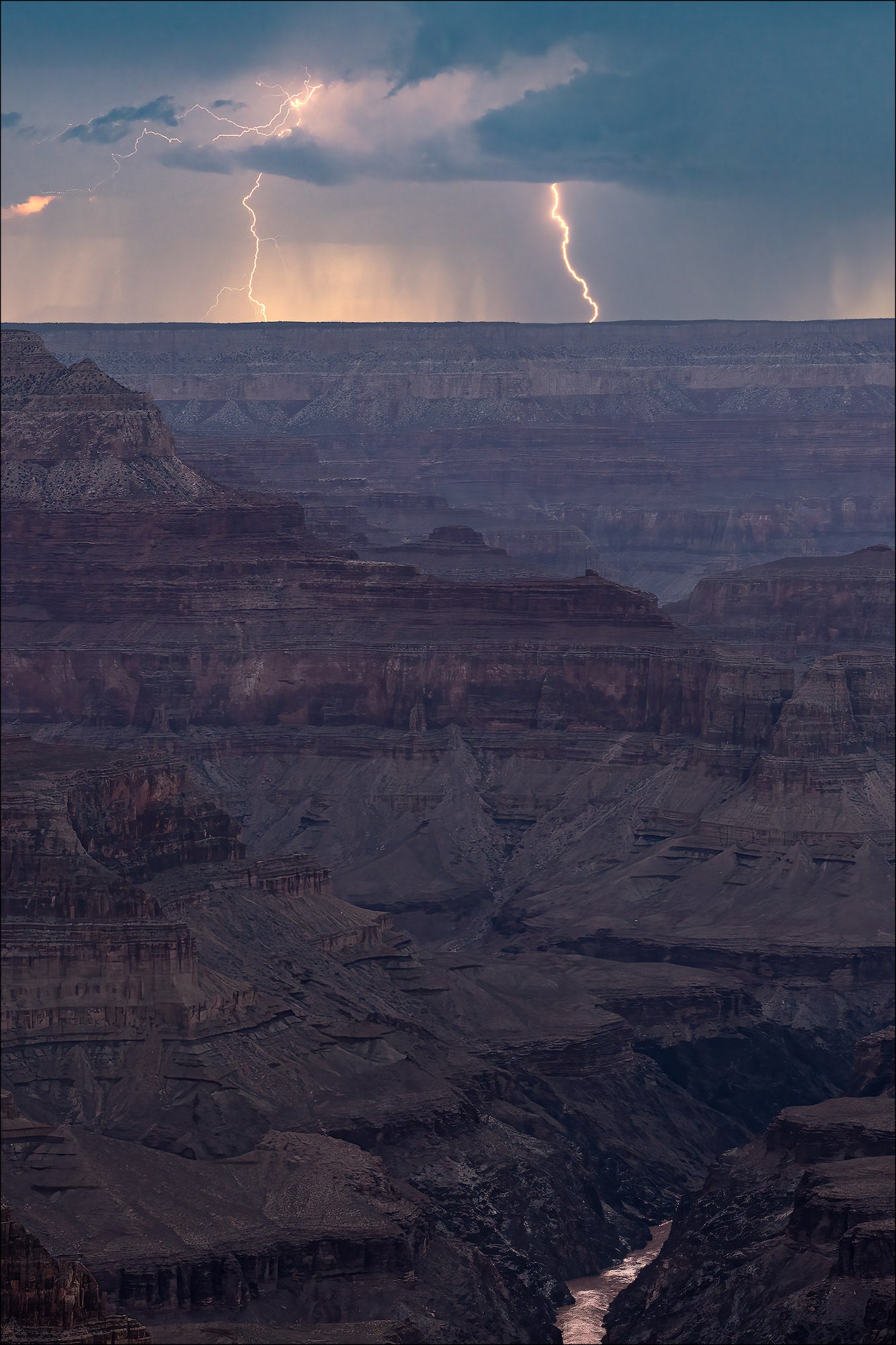
Photo by Gary Hart. Sony Alpha 7R IV. Sony 24-105mm f/4 G. 2/5-sec., f/11, ISO 320
With the monsoon electrical primetime a couple of hours behind us, and the evening’s lightning forecast not terribly encouraging, lightning wasn’t the first thing on everyone’s mind as we set up. But despite the low expectations, I have enough experience with the Grand Canyon monsoon to know that the lightning can ramp up any time, with little warning. So my standing advice to my groups, regardless of our plan, is to never leave the hotel without the lightning sensor—advice everyone was glad they heeded this evening.
As sunset approached, we spotted what may have been the remnants of a cell that had disappointed us earlier. At one point on the verge of dissipating, in a matter of minutes it seemed to regroup and start moving northward, across our view and toward the canyon. As the thunderhead bloomed skyward and a curtain of rain darkened beneath it, everyone’s first reaction was some version of, “No big deal” (fool me once, …). But all it took was one relatively weak bolt to send us all scrambling for our lightning sensors.
Everything after that is pretty much a blur because as the storm approached the canyon rim, some unseen force dialed the voltage up to 11. Soon it was delivering several massive bolts every minute. These 0-to-60 electrical storms are a big part of what makes Grand Canyon monsoon photography so thrilling—and compensation for the 60-to-0 storms that make it so frustrating.
This evening’s display couldn’t have been better positioned over Hopi Point’s best view if I’d have commissioned it myself. Better still, all the activity was a relatively safe 15-20 miles away and moving left to right (not toward us). It wasn’t long before I lost track of the number of lightning bolts we saw: double strikes, triple strikes, serpentine strikes, each with an array of spidery filaments—pretty much a lightning photographer’s entire wish list all in one show.
At first we were all awestruck with each strike, as it seemed like each bolt was trying to outdo the one before it. Eventually the spectacle became so ridiculous that when the next one hit, all we could do was laugh at our good fortune.
See more of Gary Hart's work on his Alpha Universe Profile and explore his workshops at garyhartphotography.com.
